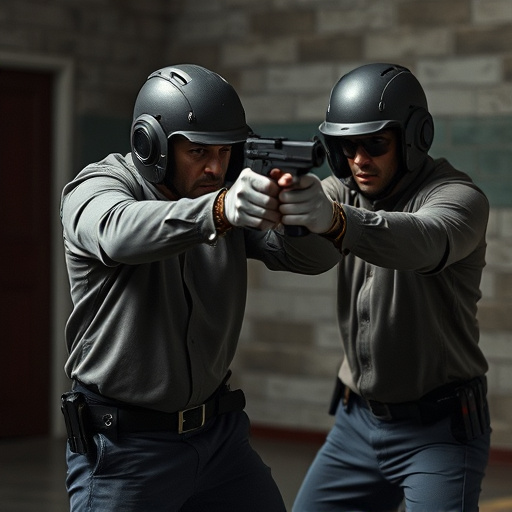Pepper spray remains an effective personal defense tool in rainy conditions due to its active ingredient, capsaicin, which causes temporary blindness and respiratory distress. Modern water-resistant designs mitigate dilution from rain, but strong winds can blow the spray back. Responsible use, protective gear, training, and awareness are crucial for optimal effectiveness. Pocket-sized, versatile pepper spray devices offer discreet protection without sacrificing potency, ensuring users' safety during unexpected weather changes or outdoor activities.
In today’s unpredictable world, personal safety is paramount. One compact yet powerful tool gaining popularity for self-defense is the pocket-sized pepper spray device. This article delves into the effectiveness of these devices, particularly in challenging weather conditions, focusing on debunking myths about their performance in rain. We explore how these handy tools work and the benefits they offer, empowering individuals to make informed decisions for their safety.
- Understanding Pepper Spray: How Does it Work in Different Weather Conditions?
- Pocket-Sized Defense: Features and Benefits of a Compact Spray Device
- Pepper Spray Effectiveness in Rain: Myths Debunked and Safety Tips
Understanding Pepper Spray: How Does it Work in Different Weather Conditions?
Pepper spray is a popular and effective personal defense tool, designed to incapacitate an attacker temporarily. Understanding how it works in various weather conditions, especially rain, is crucial for its optimal effectiveness. The active ingredient in pepper spray is capsaicin, a natural compound derived from chili peppers. When sprayed, it irritates the eyes, nose, throat, and skin, leading to temporary blindness, coughing, and difficulty breathing.
In wet or rainy conditions, the effectiveness of pepper spray can be influenced by several factors. Water can dilute the concentration of capsaicin, reducing its potency. However, modern pepper sprays are designed with water-resistant properties, ensuring they maintain their efficacy in light rain. Strong winds and heavy rainfall might blow the spray back towards the user, so it’s essential to use it responsibly and consider protective gear or a shield. Despite these challenges, pepper spray remains a reliable defense mechanism, especially when combined with proper training and awareness, offering users a sense of security in different weather scenarios.
Pocket-Sized Defense: Features and Benefits of a Compact Spray Device
Pocket-sized personal defense spray devices have revolutionized self-protection, offering a compact and discreet solution for individuals seeking safety on-the-go. These innovative tools pack a powerful punch in a small package, providing users with the confidence to face potential threats. One of the key features is their versatility; they are designed to be easily portable, fitting comfortably in pockets or purses without compromising on effectiveness. This accessibility ensures that help is always within reach.
Additionally, these devices are known for their reliability in various weather conditions, including rain. Unlike some traditional pepper spray products, pocket-sized defense sprays often boast improved formulations and delivery systems that maintain effectiveness even when exposed to moisture. The Pepper Spray Effectiveness in Rain is a significant advantage, assuring users that their protection remains robust during unexpected weather changes or outdoor activities.
Pepper Spray Effectiveness in Rain: Myths Debunked and Safety Tips
Many users question the effectiveness of pepper spray during rainy conditions, but it’s crucial to understand that proper use trumps environmental factors like rain. The active ingredient in pepper spray, capsaicin, disrupts vision and respiratory functions regardless of weather. However, a myth persists that rain renders pepper spray useless. This isn’t entirely true; while water can temporarily dilute the concentration, modern pepper sprays are designed with water-resistant properties, ensuring their potency remains intact.
To maximize the effectiveness of your pocket-sized personal defense spray in rainy situations, remember these safety tips: store it in a waterproof case, keep it easily accessible, and ensure proper application. Aim for the attacker’s face, breath in deeply before spraying, and follow up with another burst if necessary. Regularly test your spray to confirm its functionality, especially after exposure to moisture. These simple precautions can make all the difference when facing potentially dangerous situations, regardless of weather conditions.
In light of these discussions, it’s clear that pepper spray remains a highly effective personal defense tool, even in challenging weather conditions like rain. Understanding its dynamics and proper usage is crucial for ensuring safety. When used correctly, a pocket-sized personal defense spray device can be a game-changer, offering swift protection without the need for bulky equipment. Remember that knowledge and preparation are key; stay informed about local regulations and always follow safety guidelines to maximize your tool’s effectiveness.
